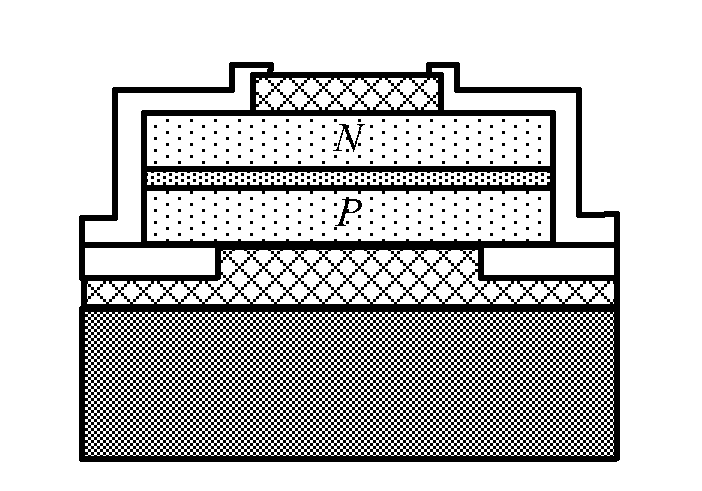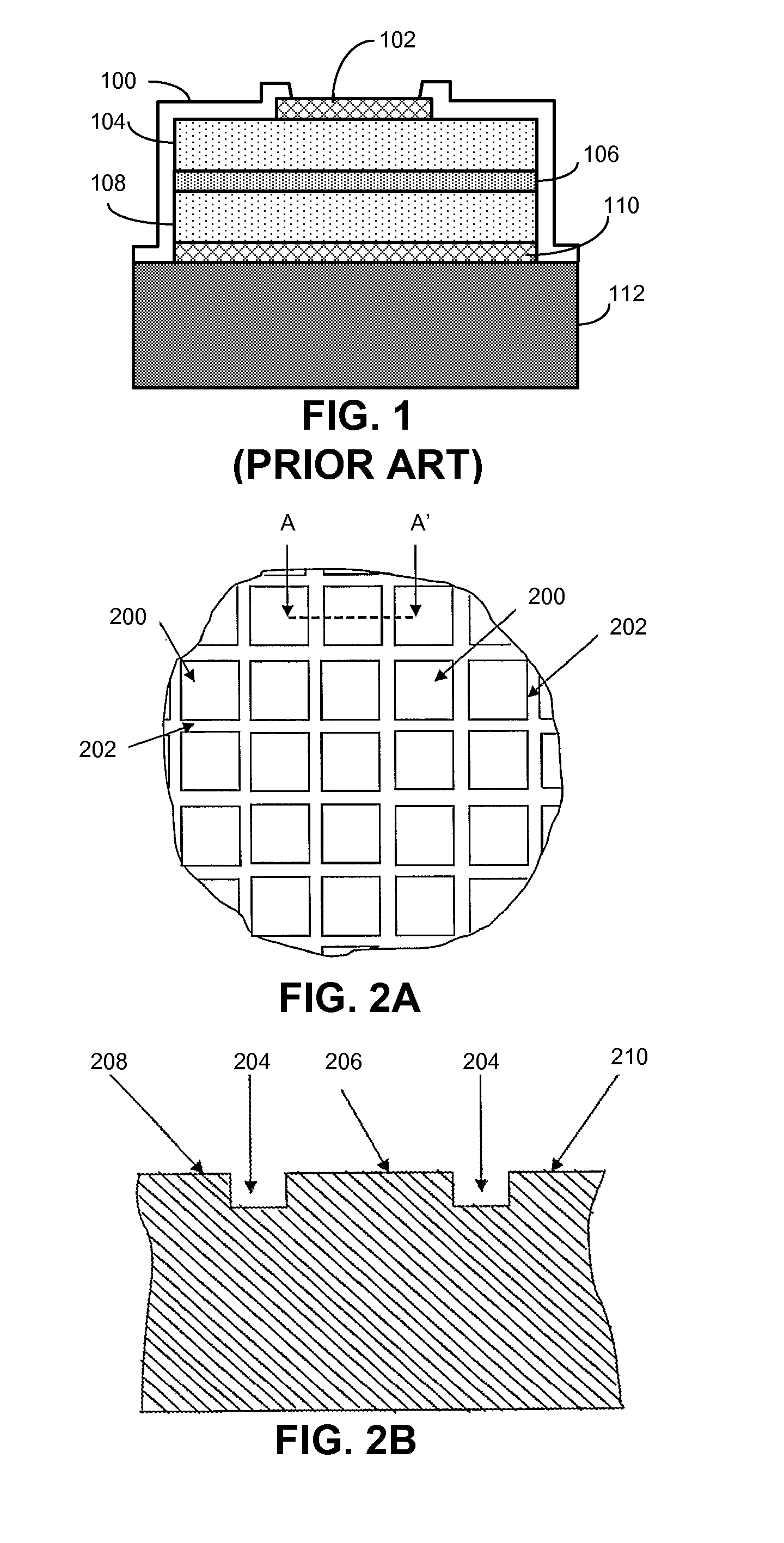Semiconductor light-emitting device with double-sided passivation
a semiconductor and light-emitting device technology, applied in the field of design of semiconductor light-emitting devices, can solve the problems of increasing impurities and defects, severely degrading the reliability and stability of leds, and sidewall coverage of a conventional passivation layer, for example, the layer b>100/b> shown in fig. 1, is often non-ideal, and achieves the effect of reducing surface recombination
- Summary
- Abstract
- Description
- Claims
- Application Information
AI Technical Summary
Benefits of technology
Problems solved by technology
Method used
Image
Examples
examples
[0039]In one embodiment, a conventional substrate is patterned and etched to form individual mesas. Each mesa has a size of approximately 300×300 μm2. A 500-angstrom-thick SiO2 layer forms the bottom passivation layer, and a 2,000-angstrom-thick SiO2 layer forms the top passivation layer. After etching, the size of the p-side electrode is approximately 250×250 μm2. The top surface area of the device after edge removal is approximately 280×280 μm2.
[0040]In one embodiment, each mesa has a size of approximately 300×300 μm2. A 500-angstrom-thick SiO2 layer forms the bottom passivation layer, and a 2,000-angstrom-thick SiNx layer forms the top passivation layer. After etching, the size of the p-side electrode is approximately 250×250 μm2. The top surface area of the device after edge removal is approximately 280×280 μm2.
[0041]In one embodiment, each mesa has a size of approximately 300×300 μm2. A 100-angstrom-thick SiNx layer forms the bottom passivation layer, and a 5,000-angstrom-thick...
PUM
 Login to View More
Login to View More Abstract
Description
Claims
Application Information
 Login to View More
Login to View More - R&D
- Intellectual Property
- Life Sciences
- Materials
- Tech Scout
- Unparalleled Data Quality
- Higher Quality Content
- 60% Fewer Hallucinations
Browse by: Latest US Patents, China's latest patents, Technical Efficacy Thesaurus, Application Domain, Technology Topic, Popular Technical Reports.
© 2025 PatSnap. All rights reserved.Legal|Privacy policy|Modern Slavery Act Transparency Statement|Sitemap|About US| Contact US: help@patsnap.com



